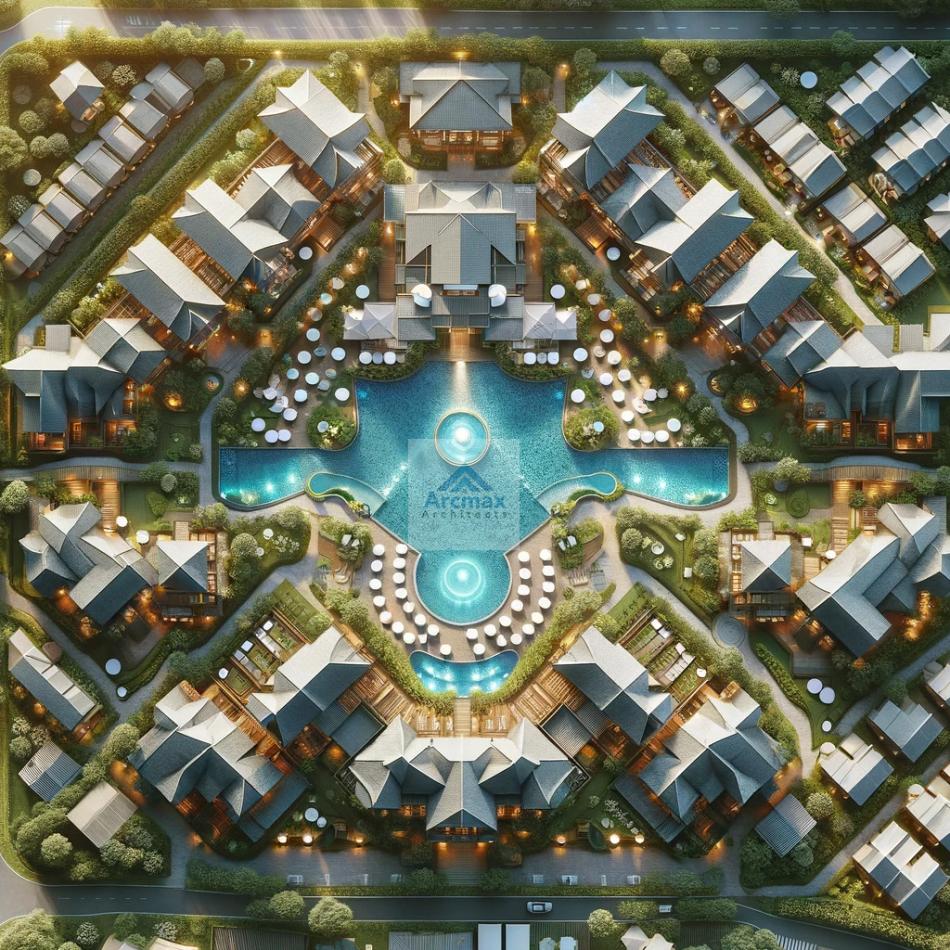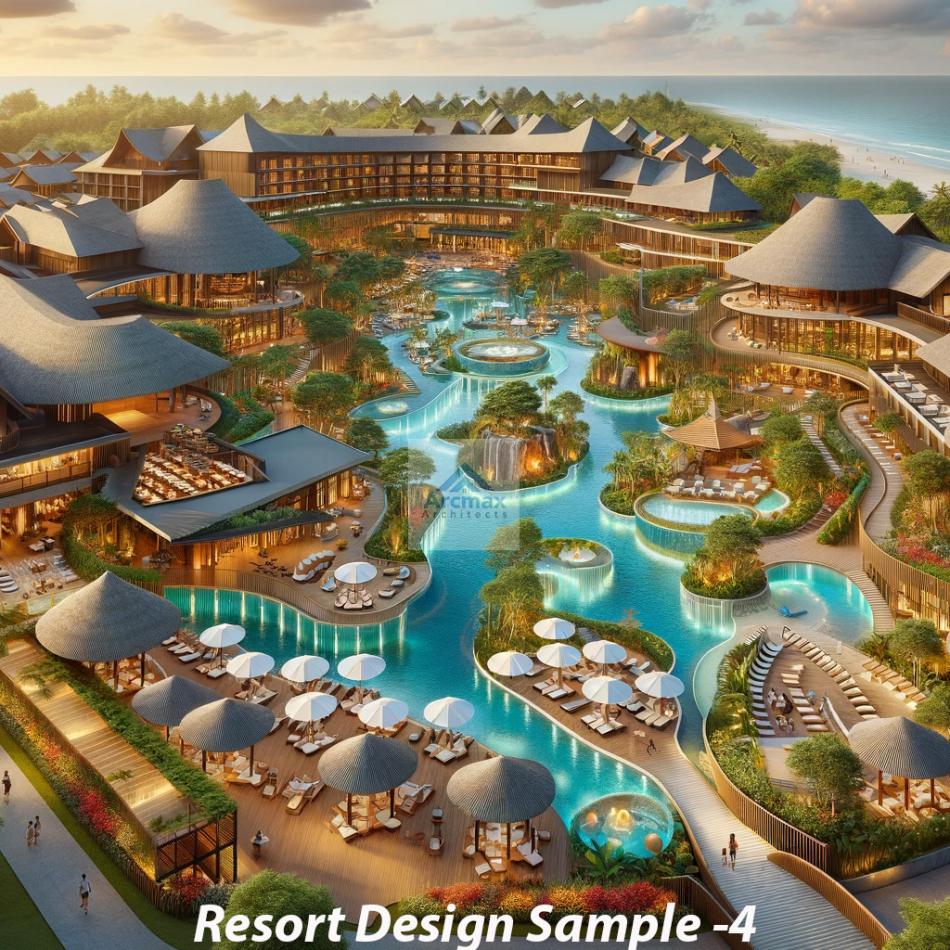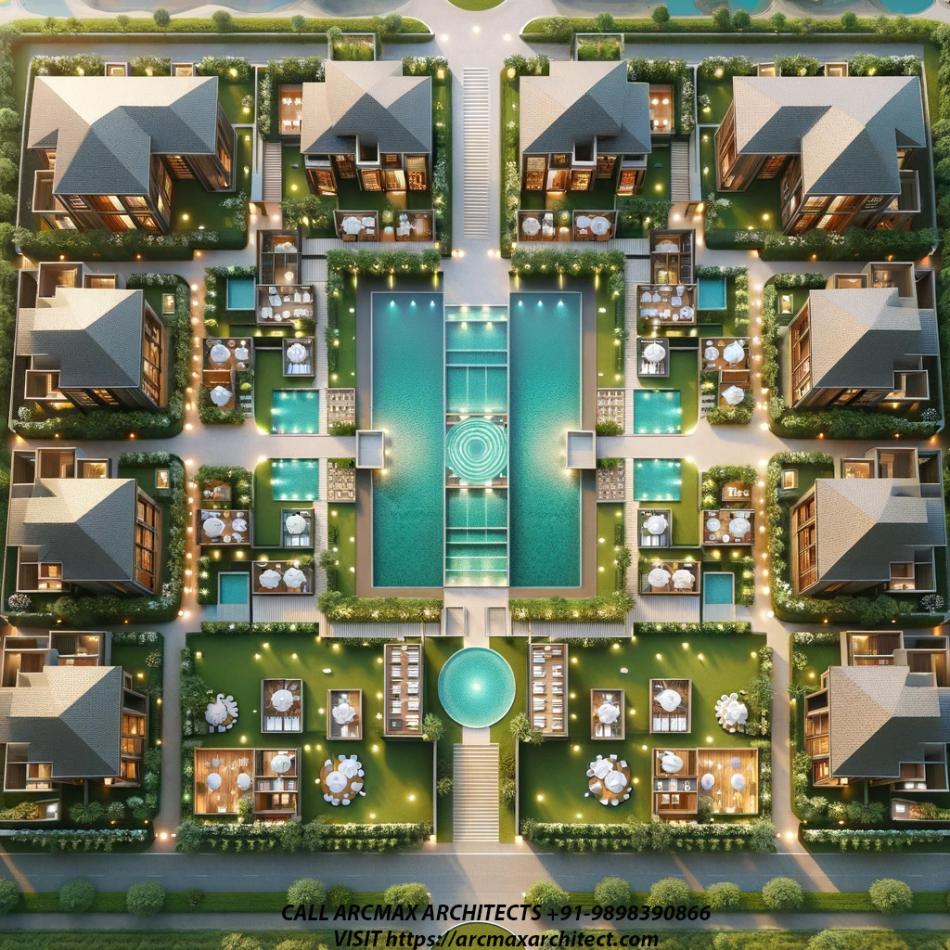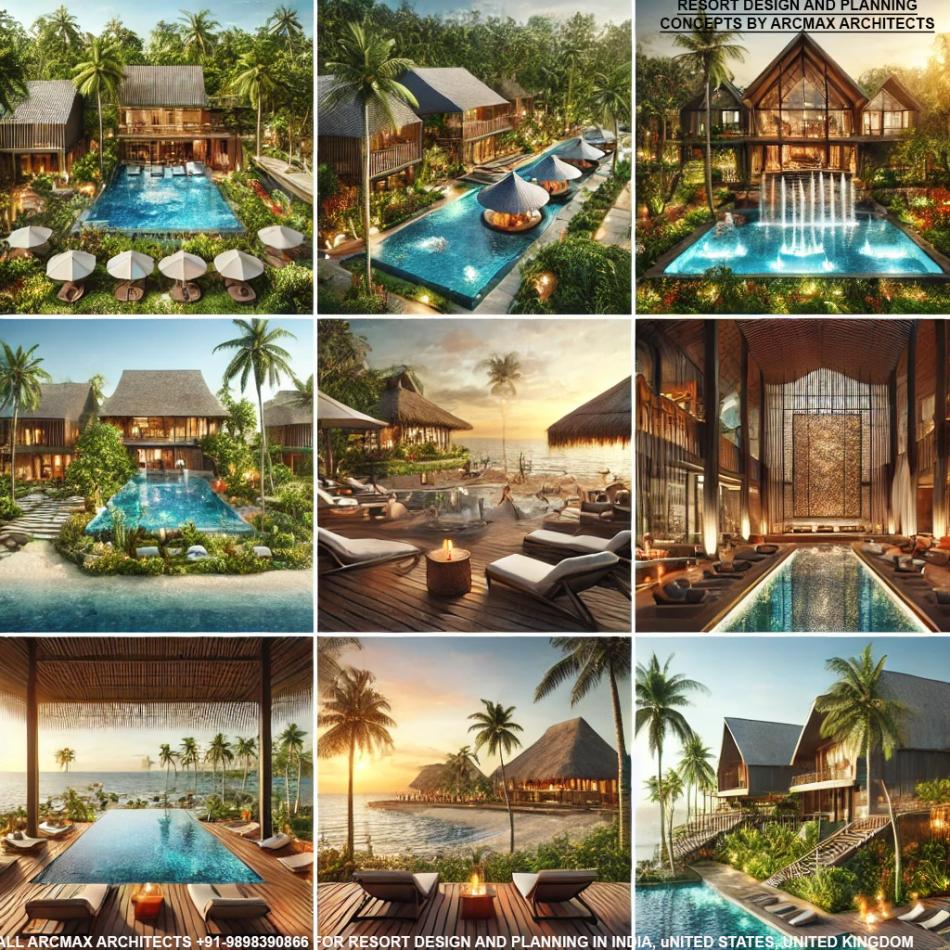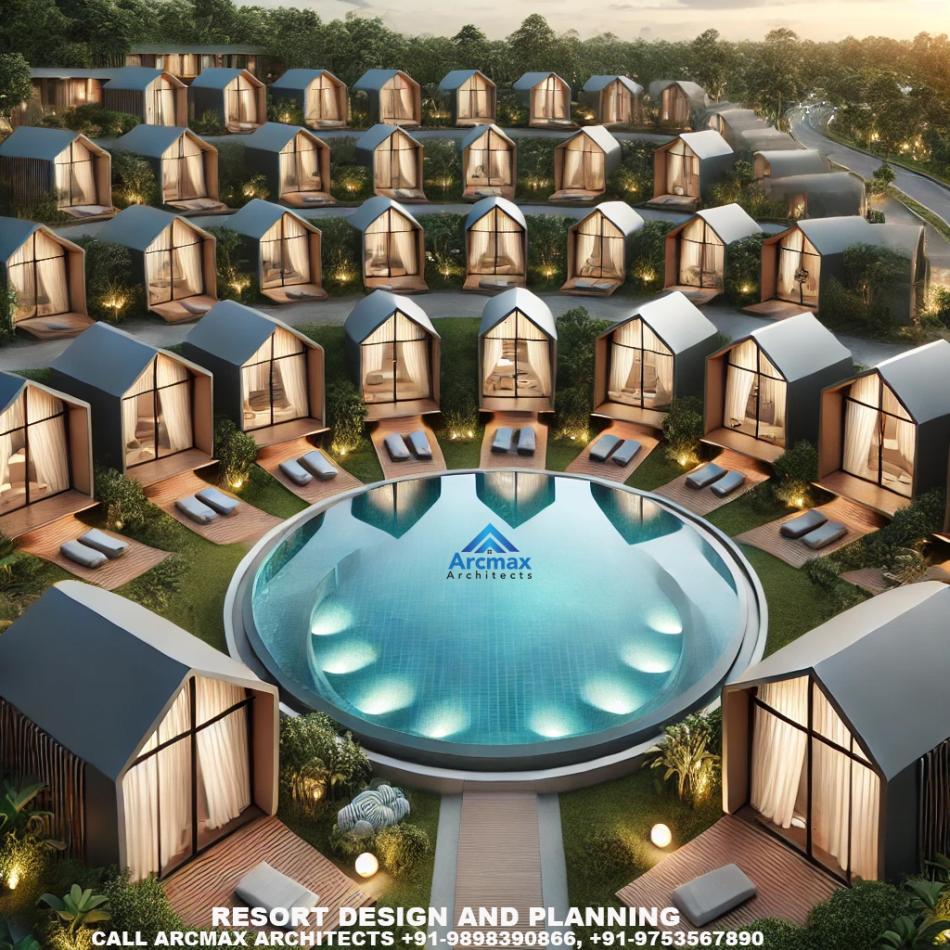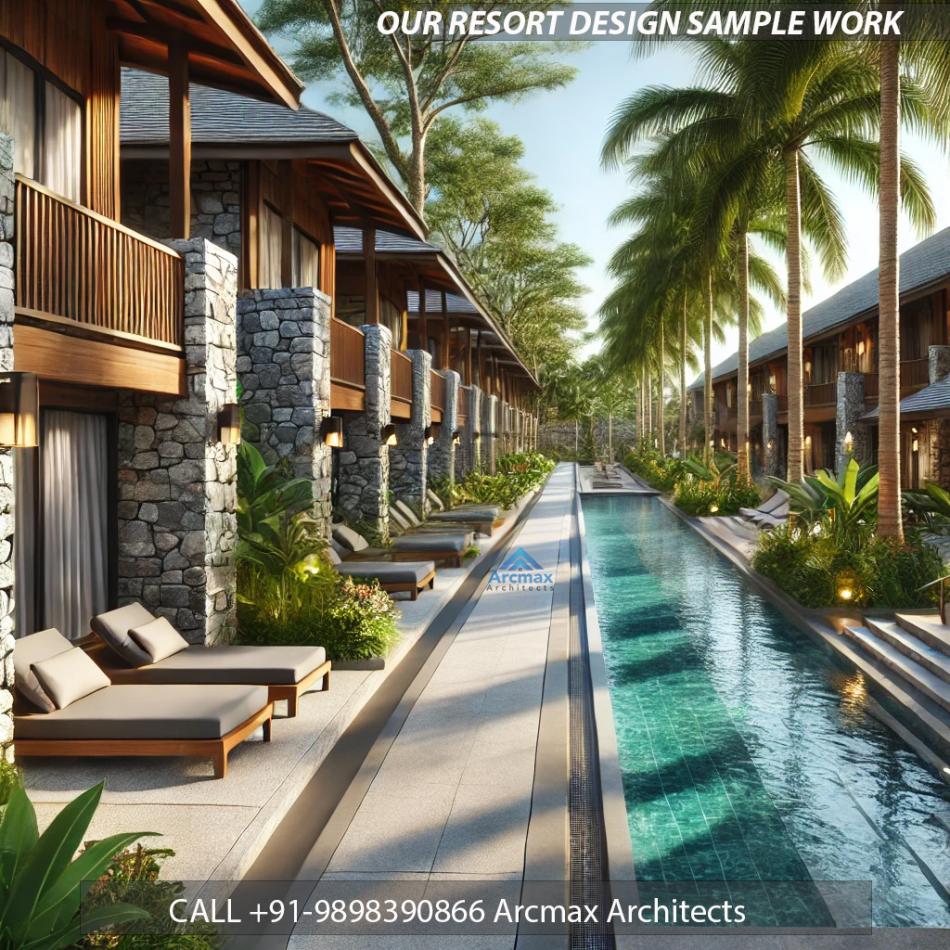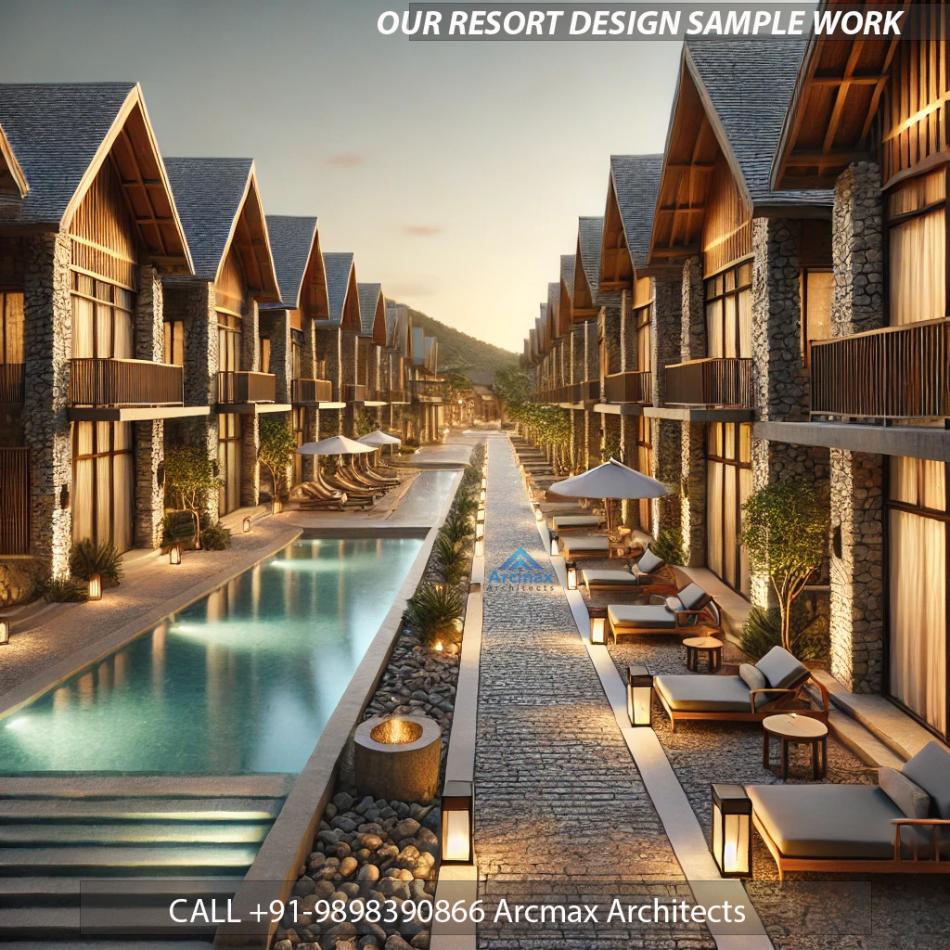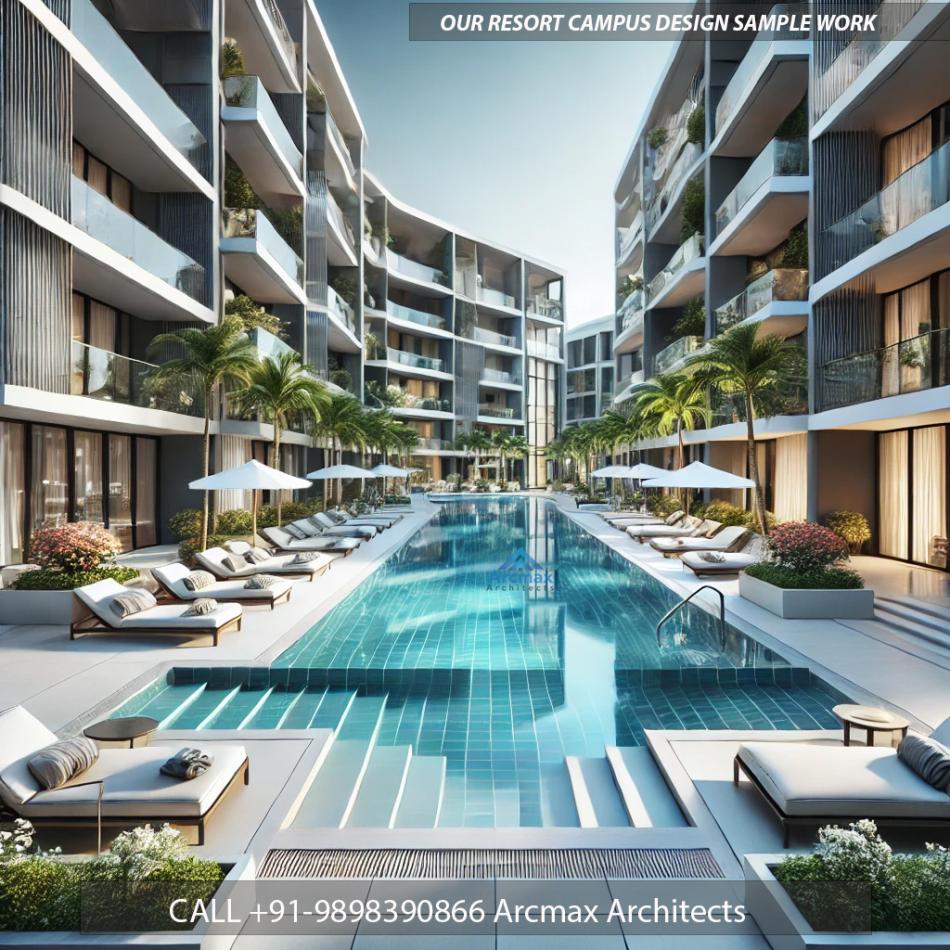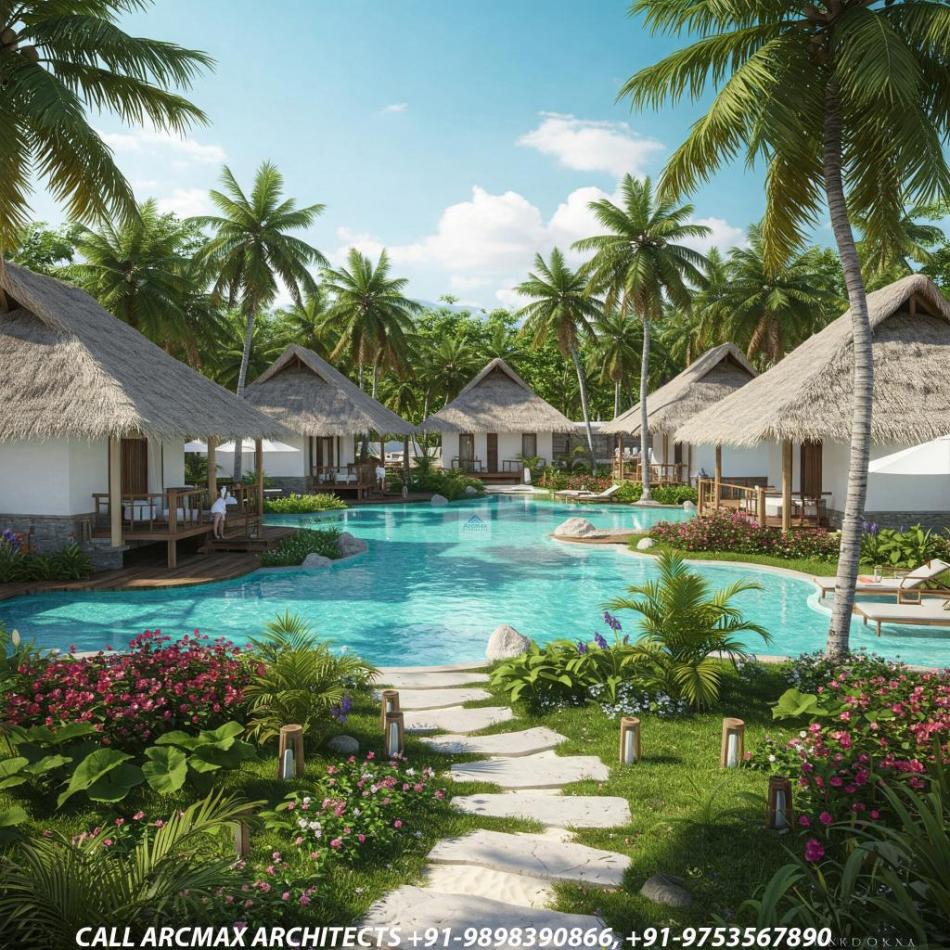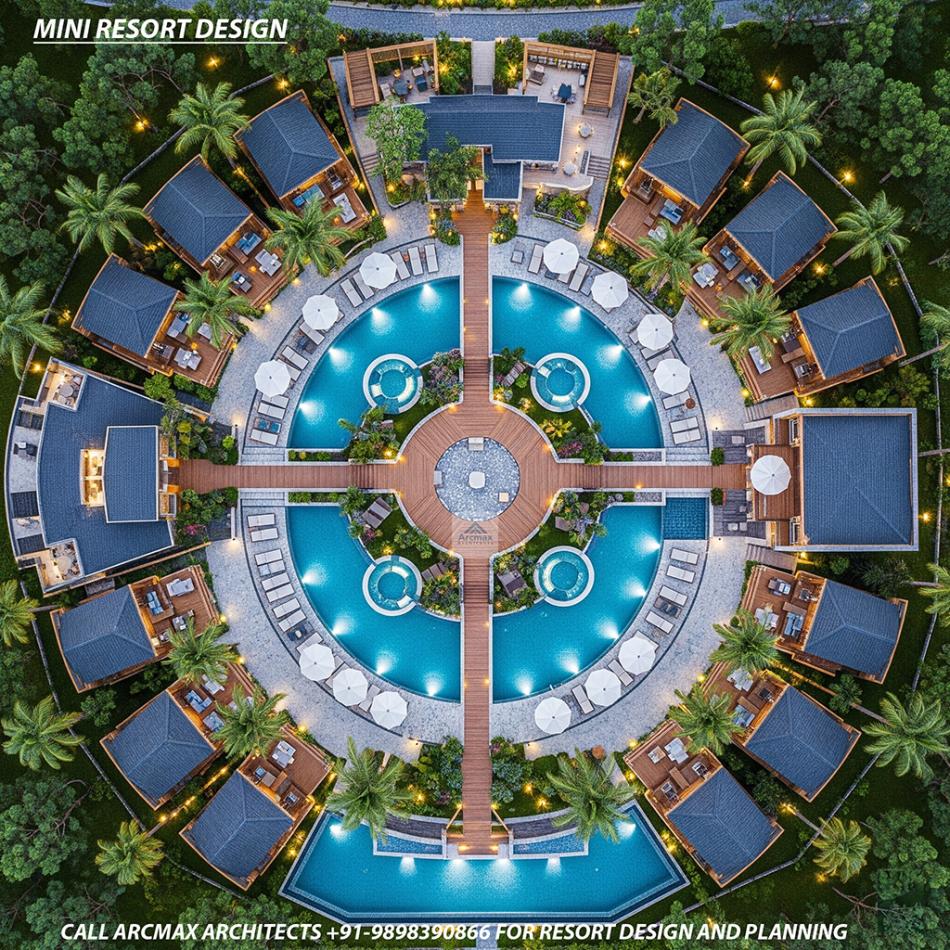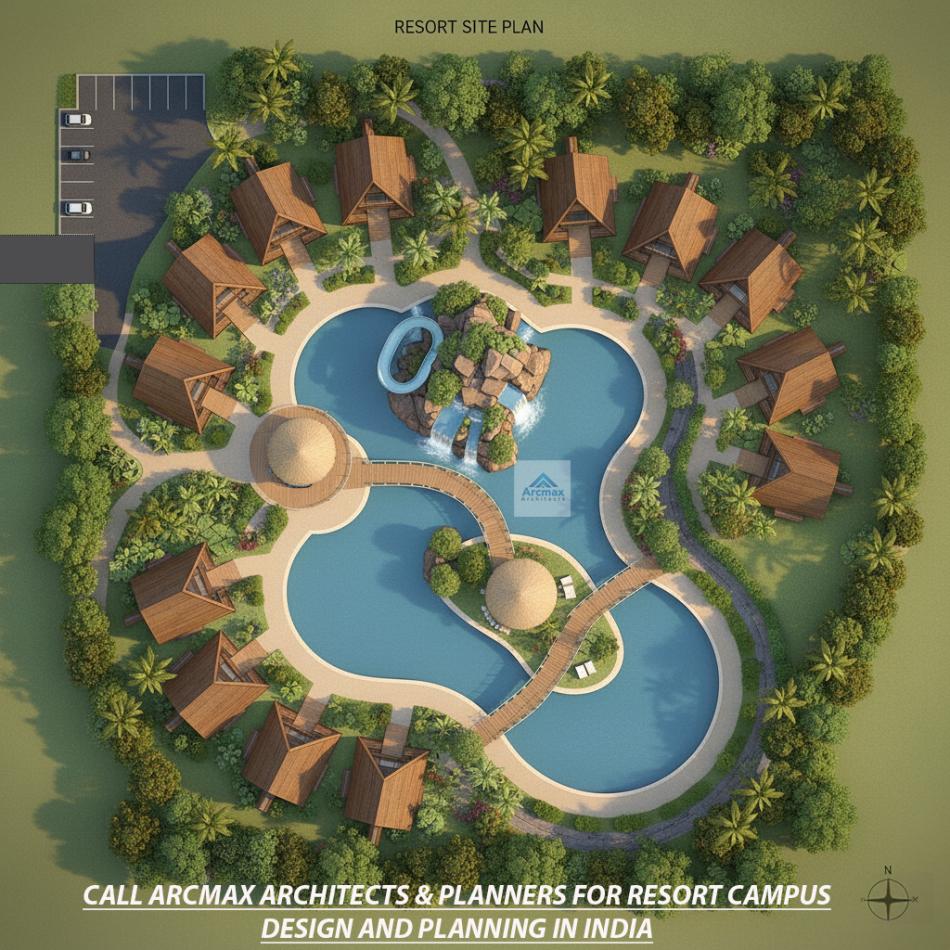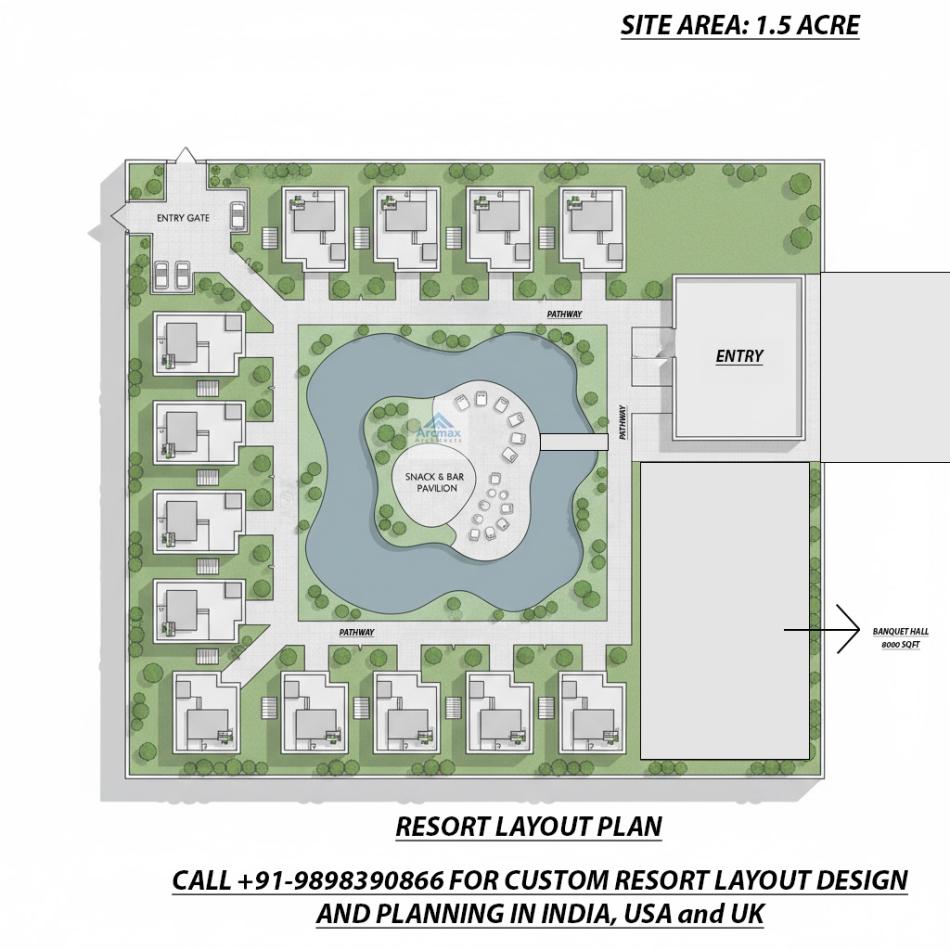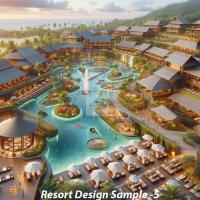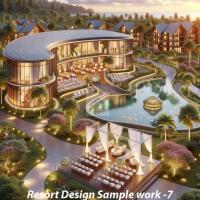Bakeri City, Pincode: 380015 Ahmedabad, Gujarat, India,
244 Madison Avenue, New York, United States

Our Client






Resort Master Planning
Resort Master Planning: Creating Destinations of Escape and Experience with Arcmax Architects, call +91-9898390866 for Resort master planning and design anywhere in the world.
Resort master planning is an intricate process that shapes the vision of a resort into a tangible reality, crafting spaces that offer escape, leisure, and unforgettable experiences. At its core, resort master planning involves the strategic orchestration of land use, architectural design, landscape architecture, and the integration of amenities and services to create a cohesive and engaging environment for guests. This multidimensional planning process not only addresses the aesthetic and functional aspects of resort development but also considers the economic, environmental, and social impacts of the project.
The Philosophy Behind Resort Master Planning:
The philosophy of resort master planning centers on creating holistic destinations that offer a seamless blend of natural beauty, cultural authenticity, and recreational diversity. These spaces are designed to cater to the physical, emotional, and psychological well-being of guests, offering a sanctuary from the hustle and bustle of everyday life. The goal is to design environments that stimulate the senses, promote relaxation and adventure, and foster memorable experiences through meticulous attention to detail and an unwavering commitment to excellence.
Key Components of Resort Master Planning:
Vision and Concept Development: The initial step involves defining the unique vision and concept for the resort, which guides all subsequent planning and design decisions. This includes establishing the theme, target market, and core values of the resort.
Site Analysis and Selection: A thorough analysis of the site is critical, considering factors such as topography, climate, natural features, accessibility, and environmental constraints. The selection and analysis of the site lay the groundwork for sustainable and context-sensitive design.
Land Use Planning: Strategic land use planning optimizes the distribution of various functions and facilities within the resort, including accommodation, dining, recreation, and service areas. This ensures a functional layout that enhances guest experiences while preserving natural and cultural resources.
Architectural Design: The architectural design of buildings and structures within the resort should reflect the overarching theme and integrate seamlessly with the natural environment. This involves careful consideration of style, materials, scale, and the relationship between indoor and outdoor spaces.
Landscape Architecture: The design of outdoor spaces, including gardens, water features, and recreational areas, plays a crucial role in enhancing the aesthetic appeal and functionality of the resort. Landscape architecture contributes to the overall ambiance and character of the resort.
Amenities and Facilities Planning: Identifying and integrating the right mix of amenities and facilities is key to meeting the needs and expectations of guests. This includes recreational facilities, wellness centers, entertainment options, and specialized attractions.
Infrastructure and Services: Effective planning of infrastructure and services, such as water supply, waste management, energy, and transportation systems, is essential for the smooth operation of the resort and the comfort of guests.
Sustainability and Environmental Stewardship: Sustainable practices should be embedded in every aspect of the master planning process, aiming to minimize environmental impact, conserve resources, and contribute to the well-being of local communities.
Economic and Market Analysis: A comprehensive economic and market analysis ensures the financial viability of the resort, assessing demand, competition, pricing strategies, and revenue projections.
The Importance of Collaboration:
Resort master planning is a collaborative endeavor that requires the expertise of a multidisciplinary team, including architects, planners, engineers, landscape architects, environmental consultants, and financial analysts. Collaboration fosters innovation, ensures a holistic approach, and addresses the complex challenges of resort development.
Resort master planning is the art and science of creating destinations that offer more than just a place to stay; they provide a gateway to experiences that enrich lives and leave lasting impressions. Through thoughtful planning, creative design, and sustainable practices, resort master planners shape the future of tourism, crafting spaces that harmonize with their surroundings, celebrate local culture, and elevate the guest experience to new heights.
Resort Master Planning Experts – ArcMax Architects
ArcMax Architects is one of the best architects in India for resort master planning, offering innovative and sustainable designs tailored to meet the diverse needs of luxury resorts and hospitality projects. Our expert team specializes in creating world-class master plans that enhance guest experiences, maximize land potential, and integrate seamlessly with natural surroundings. With years of experience and a deep understanding of architecture, ArcMax Architects has delivered iconic resort designs that balance aesthetics, functionality, and sustainability.
Whether you are looking for the best architects in Delhi for resort master planning or need a creative vision for a luxury resort in a bustling city, we have you covered. Our architectural solutions are crafted to reflect local culture and environment, ensuring a memorable experience for guests. From eco-friendly landscapes to top-tier amenities, every detail is meticulously planned.
If your resort development needs extend to central India, our presence as the best architects in Nagpur for resort master planning ensures innovative, cost-effective, and sustainable designs tailored to the region’s unique climate and terrain. ArcMax Architects’ designs are renowned for integrating open spaces, modern infrastructure, and nature-friendly materials.
Our expertise is not limited to India. We also provide comprehensive services across international markets, with a reputation as one of the best architects in the United States for resort master planning. We collaborate with leading developers to create large-scale, luxurious resorts that meet global standards of excellence.
Partner with ArcMax Architects to turn your resort vision into reality. Contact us today to discuss how we can elevate your project through innovative design and strategic planning.
Want a Quotation please fill the form
- Resort Master Planning
- Hospitality Design
- Resort Landscape Architecture
- Environmental and Sustainable Design
- Cultural and Thematic Resort Design
- Restaurant and Retail Design
- Waterfront and Beachfront Development
- Luxury and Exclusive Resorts
- Eco-Resorts and Retreats
- Adventure and Sports Resorts
- Heritage and Restoration Projects
- Resort Architecture Design


